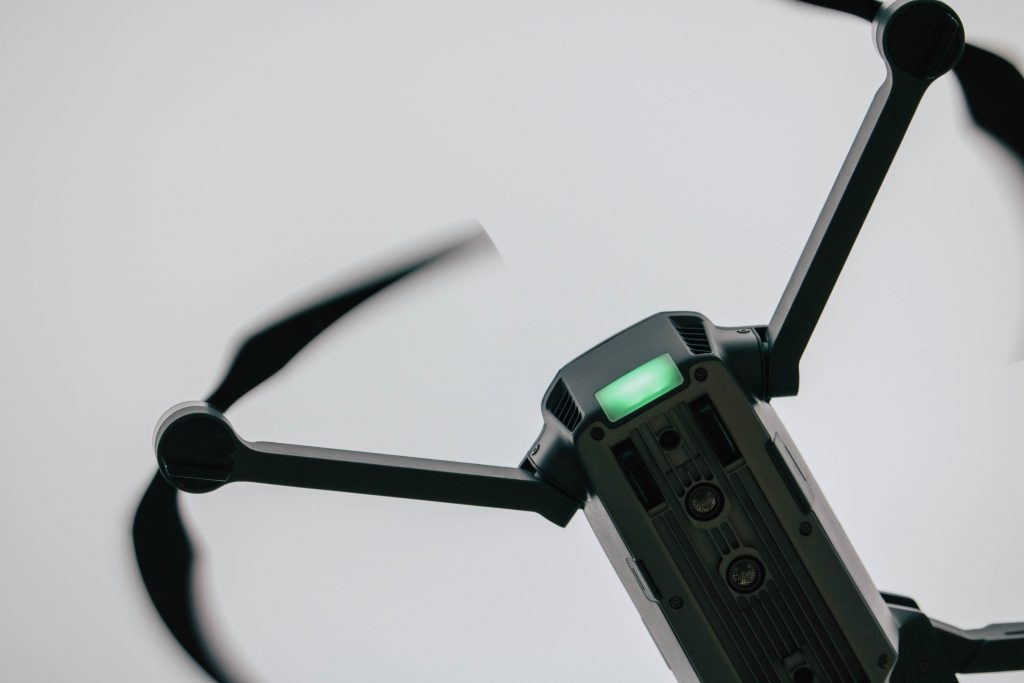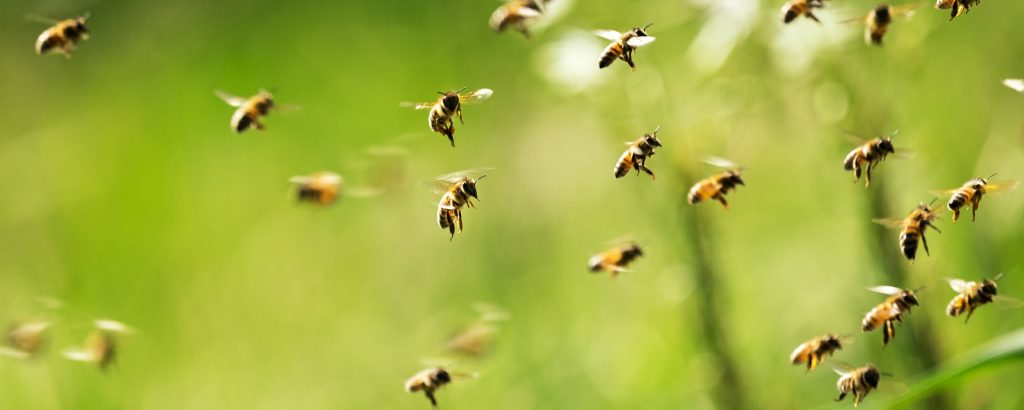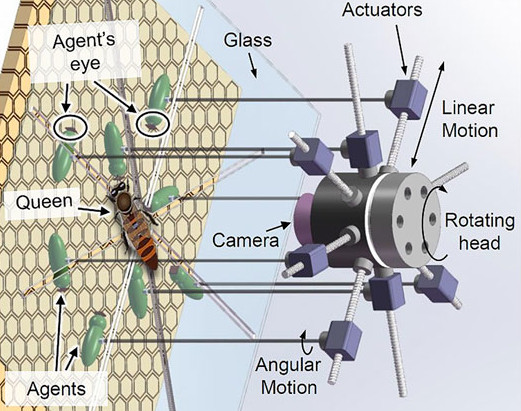How Robotics Can Help Global Renewable Energy Goals & Create Jobs
Detection of methanol using a soft photonic crystal robot
A hybrid unicycle that can move on the ground and fly
The Innovation Behind the Orbital Flex™ Design Gear Solution
How drones for organ transportation are changing the healthcare industry

Source: Unsplash
According to statistics, the healthcare drone industry has witnessed a dramatic surge in the last couple of years. In 2020, the market grew 30% and is expected to grow from $254 million in 2021 to $1,5 billion in 2028. The most common use case for healthcare drones is the delivery of medical supplies and laboratory samples.
However, it appears that in 2022, new ways of using drones have become available. Research groups in the USA have completed test drone organ delivery operations and have done so successfully. How will the proliferation of organ transportation with drones influence the healthcare industry?
What is an organ transportation drone?
Before we talk about how medical delivery drones may influence the healthcare industry, it’s worth investigating what they are and how they work.
Drones are unmanned aerial vehicles (UAVs) that can be operated remotely or that can fly autonomously using on-board sensors and GPS. The smallest drones can be as small as 30sm in length and weigh about 500 grams. The largest can reach the size of a track and carry weights up to 4.5 tons.
Drones for organ transportation are somewhere in the middle. Organs are usually delivered in batches and can actually be quite heavy with all the ecosystem that is necessary to maintain them in the desired condition. Organ delivery drones are able to carry freight up to 180kg. These drones are designed to transport vital organs such as hearts, kidneys, and livers from one location to another in a safe and efficient manner.
Drones are able to transport objects on relatively short distances. While iner-city and inter-city delivery is possible it’s probably too early to talk about international transportation. This limitation can be explained by the difficulties of piloting the drone as well as by the nature of organ transplantation as such that is an extremely timely matter.
Why are organ transportation drones so important?
Right now organ delivery drones are still on the stage of development and testing. However, a survey conducted among surgeons in the USA has shown that this innovation may have high importance for the field.
A survey by University of Maryland Medical Center in Baltimore has shown that 76.4% of organ transplantation surgeons believe that cold ischaemia time reduction to 8 hours, achieved via the use of organ delivery drones, would increase organ acceptance rates. In fact, time to delivery reduction is one of the most significant benefits of using drones for the delivery of organs. After the organs have been extracted from the body, they only have 4 to 72 hours to be transplanted. The longer the waiting time the higher are the chances of the organ failing upon transplantation. Only 16% of surgeons believed the current transportation system is adequate for organ delivery needs. Clara Guerrero, director of communications for the Texas Organ Sharing Alliance, says in the article for San Antonio Report, ‘You’re saving hours. What that also means is the organ is more viable. That person, they don’t have to wait so long for the organ to arrive. We’re saving lives faster and sooner’.
Another research has investigated the potential drawbacks and benefits of using organ transportation drones as opposed to delivery with commercial aircrafts and charter flights. They have used a modified, six-rotor UAS to model organ delivery. During the transportation process, they’ve measured the temperature and vibration levels. This is what they write:
“Temperatures remained stable and low (2.5 °C). Pressure changes (0.37–0.86 kPa) correlated with increased altitude. Drone travel was associated with less vibration (<0.5 G) than was observed with fixed-wing flight (>2.0 G). Peak velocity was 67.6 km/h (42 m/h). Biopsies of the kidney taken prior to and after organ shipment revealed no damage resulting from drone travel. The longest flight was 3.0 miles, modeling an organ flight between two inner city hospitals.”
In the future, the use of drones for organ transportation could greatly increase as the technology improves. For example, advances in autonomous flight systems and improved battery technology could make it possible for drones to fly longer distances and reach more remote locations. Additionally, the development of drone delivery networks could make it possible to deliver organs to hospitals and other healthcare facilities in a matter of minutes, reducing the time that vital organs are outside of a human body.
Who makes drones for organ transportation?
Currently, there are several companies in the world that are working on making organ transplantation a reality.
One such company is Zipline, based in California, USA. The company has developed a drone specifically for the transportation of medical supplies, including blood and organs. The drone is able to fly at high speeds and cover long distances, making it ideal for transporting organs between hospitals and other medical facilities.
Another company, Matternet, is also based in California and it has developed a similar drone for medical deliveries. This drone is used to deliver diagnostic samples in Switzerland and can be applied for carrying small organs as well.
A Canadian company Unither Bioélectronique specializes in quick and efficient delivery methods for organ transportation such as drones. The Indian government is developing an organ delivery drone system together with.
In China, a company called EHang has developed a drone that can transport organs and other medical supplies. This drone is able to fly at high speeds and cover long distances, making it ideal for transporting organs between hospitals and other medical facilities.
In Europe, a company called Volocopter, based in Germany, has developed a drone specifically for the transportation of organs. The drone is equipped with advanced navigation systems and can fly at high speeds, making it ideal for transporting organs between hospitals and other medical facilities.
In India, the first human organ delivery drone developed by MGM Healthcare. It can be used to transport organs with a maximum distance of 20 kilometers.
Conclusion
The use of organ drone delivery represents a significant breakthrough in the field of organ transplantation. This innovative technology has the potential to revolutionize the way organs are transported, making the process faster, more efficient, and more reliable than ever before. By reducing the time it takes to deliver organs to transplant centers, drones could help save countless lives by ensuring that patients receive the organs they need in a timely manner. Moreover, by reducing the risk of organ damage during transport, drones could improve the success rates of organ transplants, leading to better outcomes for patients. With the ongoing development of organ drone delivery technology, we can look forward to a future where organ transplantation is more accessible, reliable, and effective than ever before.
New Yorkers friendlier than expected as robots take out the trash
Researchers develop head-worn device to control mobile manipulators
Making mind-controlled robots a reality
A robot that makes and launches paper planes to test designs
Zipline Unveils New Autonomous System Capable of Quiet, Fast and Precise Home Delivery
Lacking health workers, Germany taps robots for elder care
Robotic bees and roots offer hope of healthier environment and sufficient food

Robotics and AI can help build healthier bee colonies, benefitting biodiversity and food supply. © 0 Lorenzo Bernini 0, Shutterstock.com
The robotic bee replicants home in on the unsuspecting queen of a hive. But unlike the rebellious replicants in the 1982 sci-fi thriller Blade Runner, these ones are here to work.
Combining miniature robotics, artificial intelligence (AI) and machine learning, the plan is for the robotic bees to stimulate egg laying in the queen by, for example, feeding her the right foods at the right time.
Survive and thrive
‘We plan to affect a whole ecosystem by interacting with only one single animal, the queen,’ said Dr Farshad Arvin, a roboticist and computer scientist at the University of Durham in the UK. ‘If we can keep activities like egg laying happening at the right time, we are expecting to have healthier broods and more active and healthy colonies. This will then improve pollination.’
While that goes on above the surface, shape-morphing robot roots that can adapt and interact with real plants and fungi are hard at work underground. There, plants and their fungal partners form vast networks.
These robotic bees and roots are being developed by two EU-funded projects. Both initiatives are looking into how artificial versions of living things central to maintaining ecosystems can help real-life organisms and their environment survive and thrive – while ensuring food for people remains plentiful.
“If we can keep activities like egg laying happening at the right time, we are expecting to have healthier broods.”
– Dr Farshad Arvin, RoboRoyale
That could be crucial to the planet’s long-term future, particularly with many species currently facing steep population declines as a result of threats that include habitat loss, pollution and climate change.
One of those at risk is the honeybee, a keystone species in the insect pollination required for 75% of crops grown for human food globally.
Fit for a queen
The RoboRoyale project that Arvin leads combines microrobotic, biological and machine-learning technologies to nurture the queen honeybee’s well-being. The project is funded by the European Innovation Council’s Pathfinder programme.
A unique aspect of RoboRoyale is its sole focus on the queen rather than the entire colony, according to Arvin. He said the idea is to demonstrate how supporting a single key organism can stimulate production in the whole environment, potentially affecting hundreds of millions of organisms.
The multi-robot system, which the team hopes to start testing in the coming months, will learn over time how to groom the queen to optimise her egg laying and production of pheromones – chemical scents that influence the behaviour of the hive.
The system is being deployed in artificial glass observation hives in Austria and Turkey, with the bee replicants designed to replace the so-called court bees that normally interact with the queen.
Foods for broods
One aim is that the robot bees can potentially stimulate egg laying by providing the queen with specific protein-rich foods at just the right time to boost this activity. In turn, an expected benefit is that a resulting increase in bees and foraging flights would mean stronger pollination of the surrounding ecosystem to support plant growth and animals.
The system enables six to eight robotic court bees, some equipped with microcameras, to be steered inside an observation hive by a controller attached to them from outside. The end goal is to make the robot bees fully autonomous.

The concept design of RoboRoyale robotic controller. © Farshad Arvin, 2023
Prior to this, the RoboRoyale team observed queen bees in several hives using high-resolution cameras and image-analysis software to get more insight into their behaviour.
The team captured more than 150 million samples of the queens’ trajectories inside the hive and detailed footage of their social interactions with other bees. It is now analysing the data.
Once the full robotic system is sufficiently tested, the RoboRoyale researchers hope it will foster understanding of the potential for bio-hybrid technology not only in bees but also in other organisms.
‘It might lead to a novel type of sustainable technology that positively impacts surrounding ecosystems,’ said Arvin.
Wood Wide Web
The other project, I-Wood, is exploring a very different type of social network – one that’s underground.
Scientists at the Italian Institute of Technology (IIT) in Genoa are studying what they call the Wood Wide Web. It consists of plant roots connected to each other through a symbiotic network of fungi that provide them with nutrients and help them to share resources and communicate.
“Biomimicry in robotics and technology will have a fundamental role in saving our planet.”
– Dr Barbara Mazzolai, I-Wood
To understand these networks better and find ways to stimulate their growth, I-Wood is developing soft, shape-changing robotic roots that can adapt and interact with real plants and fungi. The idea is for a robotic plant root to use a miniaturised 3D printer in its tip to enable it to grow and branch out, layer by layer, in response to environmental factors such as temperature, humidity and available nutrients.
‘These technologies will help to increase knowledge about the relationship between symbionts and hosts,’ said Dr Barbara Mazzolai, an IIT roboticist who leads the project.
Mazzolai’s team has a greenhouse where it grows rice plants inoculated with fungi. So far, the researchers have separately examined the growth of roots and fungi.
Soon, they plan to merge their findings to see how, when and where the interaction between the two occurs and what molecules it involves.
The findings can later be used by I-Wood’s robots to help the natural symbiosis between fungi and roots work as effectively as possible. The team hopes to start experimenting with robots in the greenhouse by the end of this year.
The robotic roots can be programmed to move autonomously, helped by sensors in their tips, according to Mazzolai. Like the way real roots or earthworms move underground, they will also seek passages that are easier to move through due to softer or less compact soil.
Tweaks of the trade
But there are challenges in combining robotics with nature.
For example, bees are sensitive to alien objects in their hive and may remove them or coat them in wax. This makes it tricky to use items like tracking tags.
The bees have, however, become more accepting after the team tweaked elements of the tags such as their coating, materials and smell, according to Arvin of RoboRoyale.
Despite these challenges, Arvin and Mazzolai believe robotics and artificial intelligence could play a key part in sustaining ecosystems and the environment in the long term. For Mazzolai, the appeal lies in the technologies’ potential to offer deeper analysis of little-understood interactions among plants, animals and the environment.
For instance, with the underground web of plant roots and fungi believed to be crucial to maintaining healthy ecosystems and limiting global warming by locking up carbon, the project’s robotic roots can help shed light on how we can protect and support these natural processes.
‘Biomimicry in robotics and technology will have a fundamental role in saving our planet,’ Mazzolai said.
This article was originally published in Horizon, the EU Research and Innovation magazine.
Robot Talk Episode 41 – Alessandra Rossi
 Claire chatted to Alessandra Rossi from the University of Naples all about social robotics, theory of mind, and robots playing football.
Claire chatted to Alessandra Rossi from the University of Naples all about social robotics, theory of mind, and robots playing football.
Alessandra Rossi is Assistant Professor at the University of Naples Federico II in Italy. Her PhD thesis was part of the Marie Sklodowska-Curie ETN SECURE project at the University of Hertfordshire in the UK, and she is now a Visiting Lecturer and Researcher there. Her research interests include human-robot interaction, social robotics, explainable AI, multi-agent systems and user profiling. She is the team leader of RoboCup team Bold Hearts at the University of Hertfordshire, and Executive Committee member of the RoboCup Humanoid League.